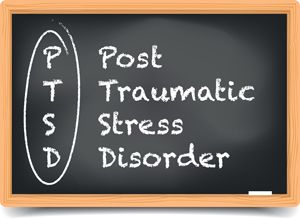
Life is full of traumatic and terrifying events that tend to occur at one point or another in our lives. These events can cause intense fear, horror, guilt, and feelings of helplessness. While the body has a built-in mechanism to handle moderate shock and fatigue from these events, excessive exposure to trauma, particularly where physical or psychological harm is involved, can lead to Post Traumatic Stress Disorder (PTSD) hence the need for online therapy for PTSD.
In as much as PTSD was introduced into the medical community through military personnel and war veterans, there are other people who are also susceptible to PTSD including victims of sexual or physical assault, natural disaster or accident, rescue workers, and emergency personnel. People suffering from PTSD experience continuous or even increasing feelings of shock, nervousness, anger, and fear which keep them from living normal lives.
Statistics reveal that close to 3.6 adult Americans suffer from PTSD in any given year while an estimated 7.8 million experience PTSD at some point in their lifetime. Due to the fact that women are more vulnerable to domestic abuse, rape, and violence, cases of them developing PTSD are higher than in men.
The Symptoms of PTSD
Being able to identify and distinguish the symptoms of PTSD from other related conditions is very important. Several types of research done across the United States show oftentimes PTSD is mistaken for Attention-Deficit/Hyperactivity Disorder (ADHD) at the diagnosis level. This is dangerous for treatment purposes because the wrong therapy could be administered or the PTSD treatment could be delayed thus worsening the problem.
The timing when symptoms of PTSD begin to show up varies from one case to the other, but in most cases, the signs appear within the first three months. The severity of the symptoms and the recovery rate also differ with some people recovering fully within the first six months while others taking much longer.
For analysis purposes, symptoms of PTSD are categorized into three main classes as follows:
Re-living - Through flashbacks, nightmares, and hallucinations, people who suffer from PTSD relive the memories and thoughts of whatever traumatic ordeals they have been through. The moment they relive events, which remind them of some element of their past trauma, they feel greatly distressed.
Avoidance - This is a much more common symptom of trauma. The PTSD sufferers deliberately avoid situations, thoughts, people, and places that remind them of their traumatic experience. Where PTSD support is not sought early enough, this avoidance can easily lead to feelings of isolation and detachment from friends and family. There is also a general loss of interest in activities that the persons once enjoyed.
Excessive Emotions - Traumatic events destabilize the emotional balance of the victims. This often leads to social relations problems, difficulties in sleeping, outbursts of anger, poor concentration and increased irritability. Where young children suffer PTSD, they may experience delays in development; especially in areas such as motor skills, potty training, and language.
It must be noted that not every person who goes through a traumatic event develops PTSD. People react differently to these events and depending on the individual ability to manage stress and fear; some may cope well while others become overly affected. The support a person receives from professionals, friends, and family significantly influences the development of PTSD and the severity of symptoms.
How Online Therapy Can Help in Post Traumatic Stress Disorder
An accurate diagnosis of PTSD is typically conducted at least one month following the occurrence of the traumatic event. This is because symptoms will have fully emerged giving the specialist crucial leads when performing the psychological exam and assessing the medical history. There is a possibility these diagnostic examinations may fail in linking physical illness to the symptoms experienced thereby necessitating PTSD support through professional psychiatrists and psychologists.
Due to advancements in technology, professional therapists use specially designed assessment and interview tools in evaluating anxiety disorders. Many of these professionals base their diagnosis of PTSD on the reported symptoms such as problems with normal functioning. The aim of PTSD treatment and recovery is to reduce the physical and emotional symptoms, help the person cope with the particular event that triggered the disorder, and improve daily functioning.
In online psychotherapy, the PTSD patient will be taught several symptoms management and coping strategies. In addition, the patient and his immediate family will have the benefit of learning more about the disorder and how they can be of support in the face of fears associated with trauma.
There are various types of therapies that are offered through the online platform. Some of these include:
Cognitive Behavioral Therapy – This involves a mastery of thought patterns and how to change them so as to avoid troublesome feelings, emotions, and behavior.
Exposure Therapy – This is a PTSD recovery therapy where the patient is deliberately taken through the traumatic experience in a safe and well-controlled environment. The goal of this exposure is to help him confront his fears and gradually gain comfort in combating situations that cause anxiety and nervousness.
Psychodynamic Therapy – This is a psychological approach that puts the person in an emotional environment where he examines his personal values and emotional pattern. This helps in opening his or her understanding of the extent the traumatic event affected him. Subsequently, the person may gain an inner inspiration to fight to regain his value system and emotional balance.
The Virtual Therapists Network is committed to giving sufferers of PTSD the required platform and professional help to begin their healing process. While it is appreciated that PTSD treatment and recovery takes time, there are immediate benefits that patients can enjoy if they seek professional help.